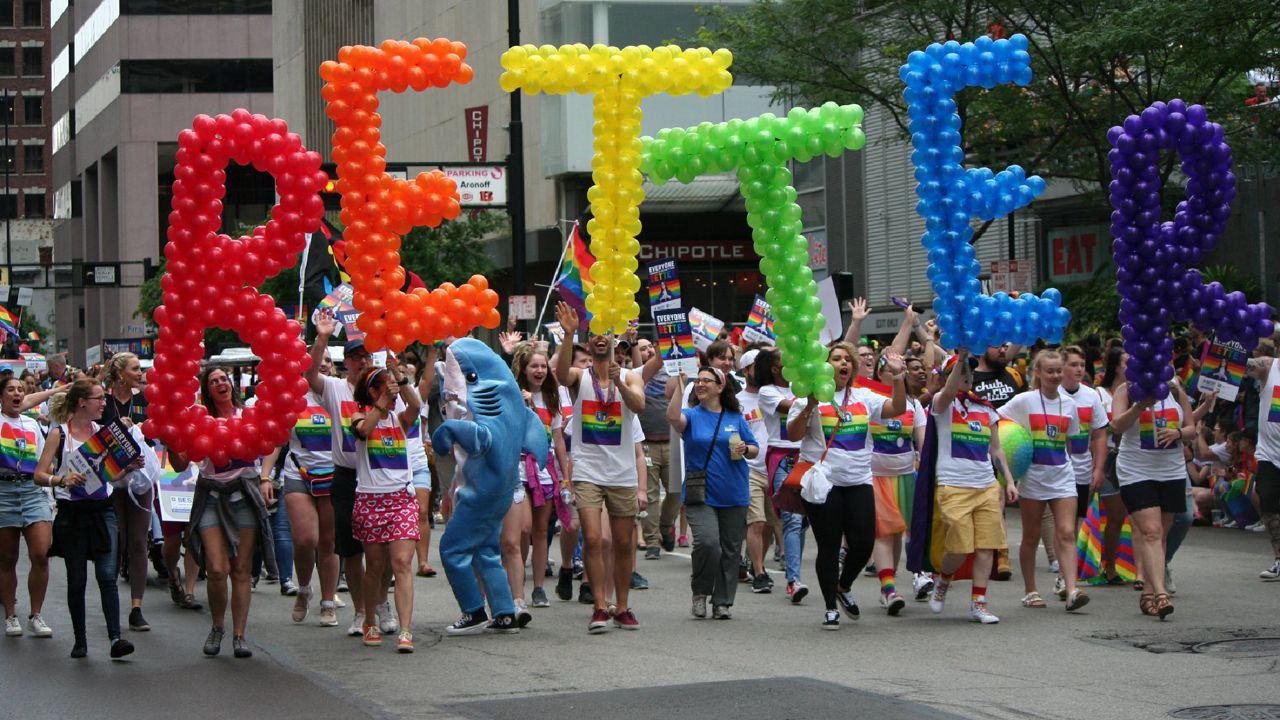CINCINNATI — More than 100,000 people from across the region plan to venture to downtown Cincinnati on Saturday for the city’s annual Pride Parade and Festival.
Now in its 50th year, the event has grown to one of the largest of its type in the Midwest. This year’s parade will include elected officials, major corporations and various allies, even families with young children.
It’s a far cry from when the event first began in 1973, said Vic Ramstetter, who attended the march from Washington Park in Over-the-Rhine to Fountain Square in downtown.
Back then, being out as a member of LGBTQ+ was still taboo, she added.
What You Need To Know
- The 50th celebration of Cincinnati Pride takes place downtown on Saturday
- Over the past five decades, it's grown from a 100-person protest to an all-day celebration of support for the LGBTQ+ community
- Organizers noted incredible progress in recent years, but stressed a need for continued action to address political challenges at the state level
Pride Month, which takes place every June, honors the legacy of the 1969 Stonewall Uprising in Manhattan, N.Y., a defining moment for gay rights in the United States.
“I will always remember that day,” she said of the first Cincinnati Pride event a half-century ago.
“It was a tad understated; less than 100 people,” added Ramstetter, who was 19 at the time. She went on to co-found the Ohio Lesbian Archives in 1989 with Phebe Beiser.
Events celebrating Pride have taken place in Cincinnati, in some capacity, every year over the past five decades. However, some years participants received more support than others, recalled Scott Knox, a prominent local attorney and an openly gay man.
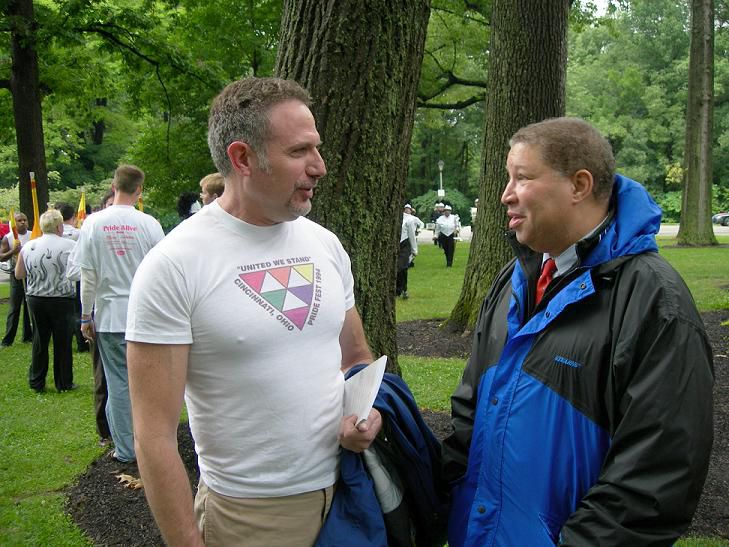
“In the early days, there were a handful of us that would march, initially downtown,” said Knox, who’s been active in the LGBTQ+ community since 1985.
He remembered witnessing a number of “confused shoppers occasionally glaring” at them as the group paraded through downtown streets. On Fountain Square, speeches about equality would be met with chants and occasional slurs by people opposed to homosexuality based on religious beliefs.
Michael Chanak Jr. had similar experiences after relocating from northeast Ohio to Cincinnati in 1978. The move led to an eventual job with Procter & Gamble.
In the late 1970s and ‘80s, being openly gay was difficult in Ohio, he said. There was no internet, and there weren’t many mainstream hangouts. Chanak’s only safe haven for a time was Golden Lions Lounge, a since-closed historic gay bar on Ludlow Avenue.
Outside those spaces, it wasn’t safe to express yourself back then, he said.
Chanak, also known as “Mother Goose” in the local gay community, remembers colleagues being worried for him, professionally and personally, after a clip of him kissing another man at the 1986 Cincinnati Pride festival was aired on a local TV news broadcast.
But it turned out to be a blessing in disguise, he said. P&G credits his unintentional “outing” at Fountain Square and later advocacy work as being a reason it updated its anti-discrimination policy in 1992 to include protection for people identifying as gay and lesbian.
“Talk about the power of Pride,” he added.
A yearly march toward acceptance
Chanak noted the city has come a long way over the years. In decades past, gays and lesbians alleged harassment by police in Cincinnati parks and were opposed to questions about sexual orientation posed to police and fire recruits.
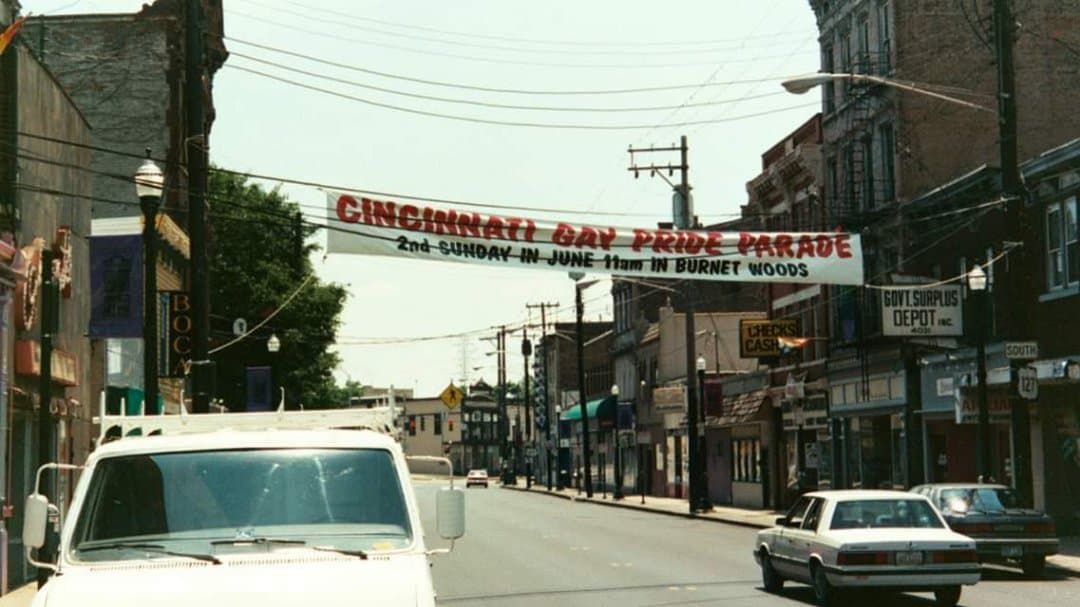
In 1993, Cincinnati voters approved a ballot initiative that prohibited the city from giving legal protection against discrimination to gays, lesbians and bisexuals. Issue 3, as it was known, eventually was overturned in court.
Ramstetter, now 69, voiced surprise and happiness over the acceptance she and other LGBTQ+ people now receive from their families and at work.
“I didn’t expect (legalization of) gay marriage,” she said. “It’s changed everyone’s life. It would have changed entire lives in ‘73.”
During the past 50 years, Cincinnati Pride has grown as well. Estimates for attendance have reached 120,000 people.
“A town that once proactively discriminated against us has come to include us in its cultural fabric,” Chanak said.
‘Volcanic’ change over the past 50 years
Changes between then and now have been “volcanic,” added Knox, who served as grand marshal of Cincinnati Pride in 2005 for his work to provide legal protections for members of the LGBTQ+ community.
“I would get a call from someone saying, ‘Hi, I work at [company name] and my boss found out that I was gay, and they’re telling me to wear a woman’s dress or something, and they’re just really harassing me.’ Years ago, without protections, all I could do was document it and send it to Equality Ohio. There was nothing else I could do for them.
“I was never comfortable with that,” Knox added. “So, when we had the chance to do something on a local level, we had to act.”
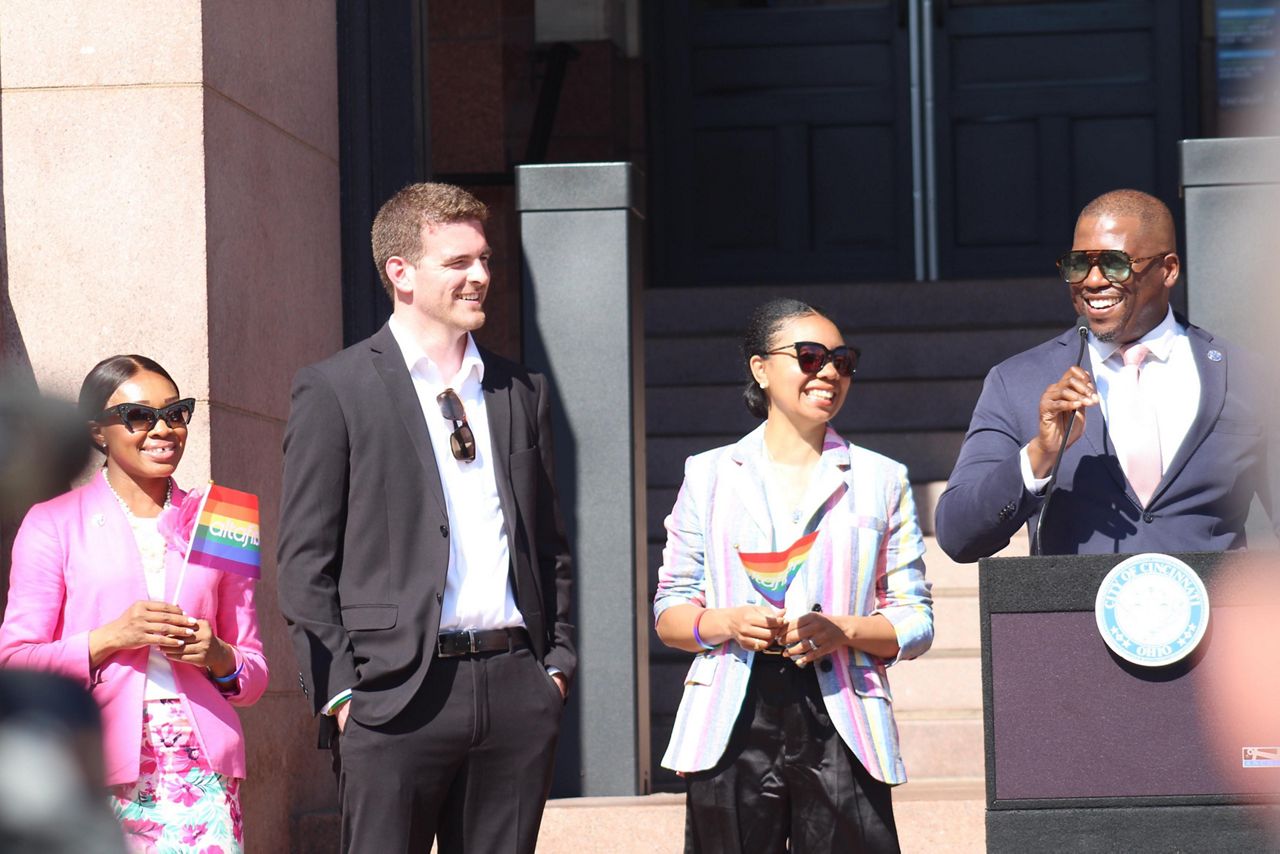
Nowadays, well-wishers and allies pack Cincinnati streets during Pride, Knox said. There’s occasionally a group of “really fringe religious people” who show up, he added. But they’re usually “overwhelmed by loving, supportive people.”
Among those in attendance at this year’s parade will be Cincinnati City Council Member Reggie Harris, an openly gay Black man. He marched last year alongside Mayor Aftab Pureval and Council Member Meeka Owens.
“Pride is a symbolic reminder that Cincinnati is in fact very inclusive and progressive,” said Harris, who joined dozens of officials at City Hall on June 1 for the raising of the Pride flag. Hamilton County held its own flag-raising ceremony that same day.
Hamilton County Commissioner Denise Driehaus has been a regular at Cincinnati Pride for the past 15 years. Her son met his partner at the Pride Festival several years ago.
She referred to Saturday as a “wonderful opportunity” to celebrate the region’s diversity.
“We will lift up and celebrate our friends, neighbors and family members who are part of the LGBTQ+ community,” Driehaus added.
The march to equality continues
While progress has been made, challenges remain, Chanak said. He referenced perceived anti-gay and -trans legislation, making it through statehouses across the nation, including Ohio. There’s also been increased opposition to drag shows, transgender athletes and over “who gets to use what bathroom,” Knox said.
Bud Light has endured a months-long boycott over the company’s relationship with trans social influencer Dylan Mulvaney.
There’ve been more than 400 bills proposed across the nation that have targeted the LGBTQ+ community, according to the Gay, Lesbian Straight Education Network (GLSEN). The education organization focuses on addressing discrimination and harassment based on sexual orientation and identity.
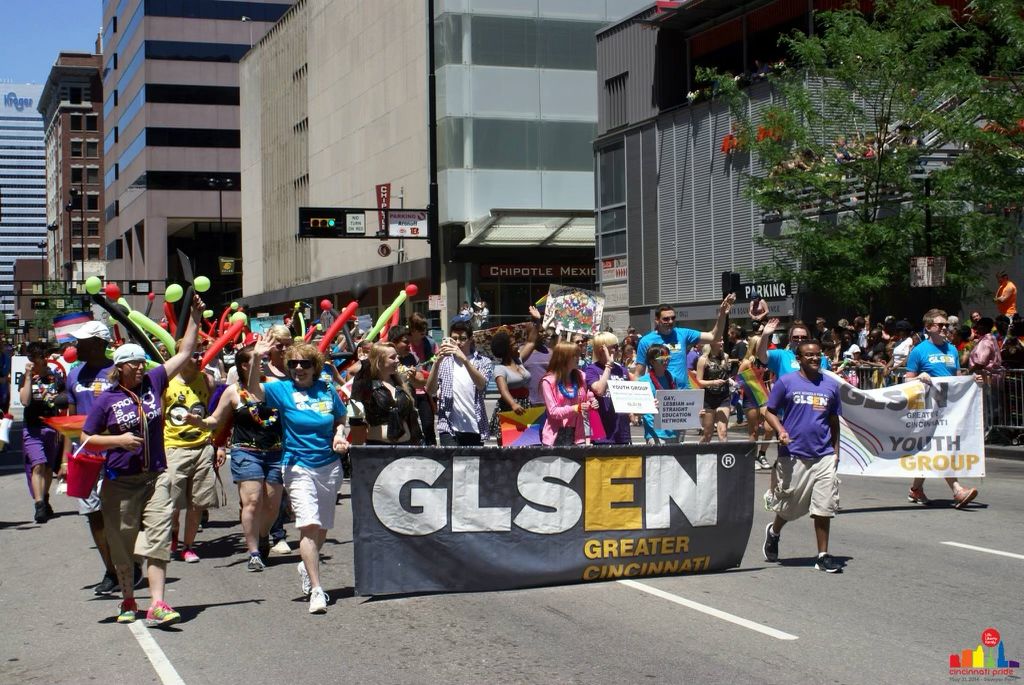
Saturday’s Pride Festival at Sawyer Point Park and Yeatman’s Cove is an opportunity for groups and organizations, such as GLSEN, to offer resources to LGBTQ+-identifying individuals who need them.
Providers in attendance will include Immanuel United Church of Christ, LifeCenter, National Youth Advocate Program, Planned Parenthood of Southwest Ohio and TreeHouse Cincinnati.
“Folks who are coming to Pride are looking for connection and community, but they’re also looking for resources and just looking to better understand who they are,” said Shawn Jeffers, co-chair of GLSEN Greater Cincinnati.
GLSEN Greater Cincinnati is operating a Teen Zone at the festival to provide a “safe space” for young people to express their identities among those going through similar experiences and allies, Jeffers said.
“We want them to have a network of support not just in June, but through the whole year,” he added.
Chanak and Knox plan to celebrate Pride on Saturday with friends and allies, but they both stressed the day shouldn’t solely be about fun.
“The struggle changes over time, but the need for Pride celebrations remains as clear as it was when the late Harvey Milk told folks, ‘Come out, come out wherever you are,’” Chanak said.
“I think it’s important to celebrate, but it’s also important to remember the struggle isn’t over,” he added. “It’s never over.”





